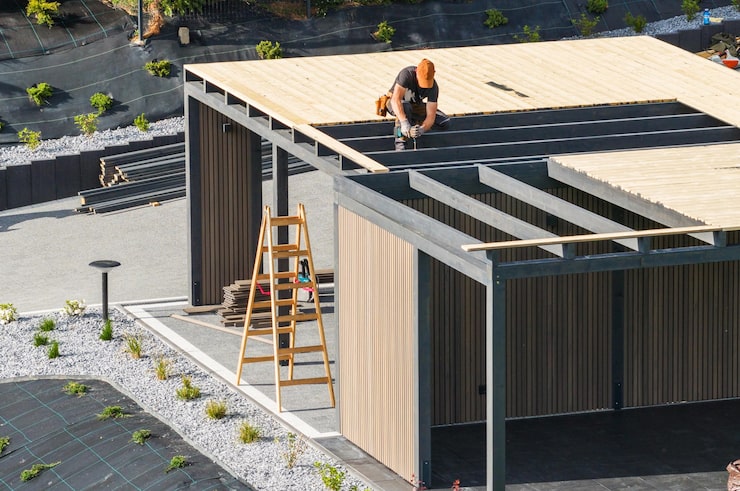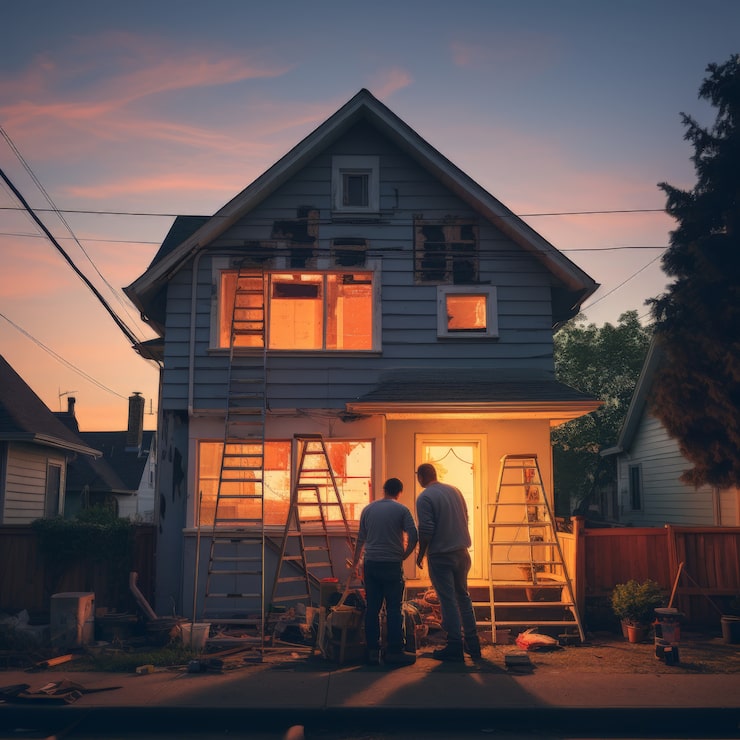When you step into a beautifully built home, you might admire the flooring, paint colors, or stylish interiors. But before all these finishing touches, there’s something far more important holding everything together — the frame. The skeleton of your home determines its strength, durability, and safety. And behind every sturdy frame is the expertise of a framing contractor.
In residential construction, residential framing contractors play a crucial role in turning an architect’s plans into a solid, lasting structure. They are quite literally the backbone of every well-built home.
What Is a Residential Framing Contractor?
A residential framing contractor is a specialized professional who constructs the wooden or metal framework of a home. This framework serves as the support structure for walls, floors, ceilings, and roofs. Without it, the house cannot stand or function properly.
They work from blueprints and architectural drawings to ensure every measurement is precise. Even a small error in framing can affect everything from the alignment of walls to the stability of the roof. That’s why hiring a skilled framing contractor is one of the most important decisions in building a house.
Why Framing Is So Important in Home Construction
Framing is more than just putting up a few beams and boards. It’s about creating a solid foundation for the rest of the home’s features to be built upon. Here’s why it matters:
- Structural Integrity – A strong frame ensures your home can withstand weight, weather, and time.
- Accurate Alignment – Proper framing keeps walls straight, floors level, and doors and windows fitting perfectly.
- Support for Design Features – Whether it’s vaulted ceilings or open floor plans, framing determines what’s possible in your home’s design.
In short, framing is the step where your dream home starts taking a physical shape.
Skills and Responsibilities of a Framing Contractor
A framing contractor isn’t just a builder with tools. They bring a unique blend of skills, technical knowledge, and attention to detail.
Key responsibilities include:
- Reading Blueprints – Understanding architectural plans and translating them into accurate measurements and layouts.
- Measuring and Cutting Materials – Ensuring lumber or metal pieces are precisely cut to size.
- Constructing the Frame – Assembling the skeleton of the home, including walls, floors, ceilings, and roof trusses.
- Ensuring Structural Safety – Following building codes and safety standards to create a frame that’s both strong and compliant.
- Coordinating with Other Trades – Working with plumbers, electricians, and other contractors so everything fits together perfectly.
Types of Residential Framing
Not all homes are framed the same way. A residential framing contractor may specialize in one or more of these methods:
- Platform Framing – The most common method, where each floor is built on top of the one below.
- Balloon Framing – Older style where studs run from the foundation all the way to the roof, less common today.
- Timber Framing – Uses large wooden beams for a rustic, traditional look.
- Steel Framing – Uses metal instead of wood for extra durability, especially in areas prone to pests or moisture.
Why You Should Hire a Professional Residential Framing Contractor
While some homeowners might consider DIY construction, framing is not the place to cut corners. Here’s why hiring a professional makes all the difference:
- Experience Counts – Professionals have the training to handle complex designs and spot potential issues early.
- Speed and Efficiency – With the right tools and crew, a framing contractor can get the job done faster without sacrificing quality.
- Code Compliance – They understand local building codes and ensure your home meets all legal requirements.
- Long-Term Value – A properly framed home is less likely to have problems like sagging floors or cracked walls in the future.
Common Challenges in Residential Framing
Even experienced framing contractors face challenges, but their expertise helps overcome them:
- Weather Delays – Rain or snow can slow down framing work, especially with wood materials.
- Material Shortages – Skilled contractors know how to adjust and still meet deadlines.
- Design Complexity – Intricate architectural features require precision and problem-solving skills.
By anticipating and handling these issues, a professional framing contractor ensures your home stays on track.
The Framing Process: Step by Step
To understand the work that goes into building your home’s skeleton, here’s a simplified look at the process:
- Site Preparation – The foundation is ready and measured.
- Laying the Floor Joists – Creates a level base for the first floor.
- Erecting Walls – Studs and plates are assembled and raised.
- Adding Upper Floors – For multi-story homes, the process repeats.
- Roof Framing – Trusses or rafters are added to support the roof.
- Sheathing – Plywood or other panels are attached to strengthen the frame.
Conclusion: The Unsung Heroes of Homebuilding
While designers and architects may get the spotlight, residential framing contractors are the unsung heroes who make those designs possible. Without their precision and skill, no home could stand strong for decades.
When building your dream home, remember that investing in a skilled framing contractor isn’t just about today’s construction — it’s about the safety, stability, and comfort of your home for years to come.
For homeowners looking for quality framing work, Snow Constructions LA is a trusted choice, ensuring every project is built on a strong and reliable frame.





